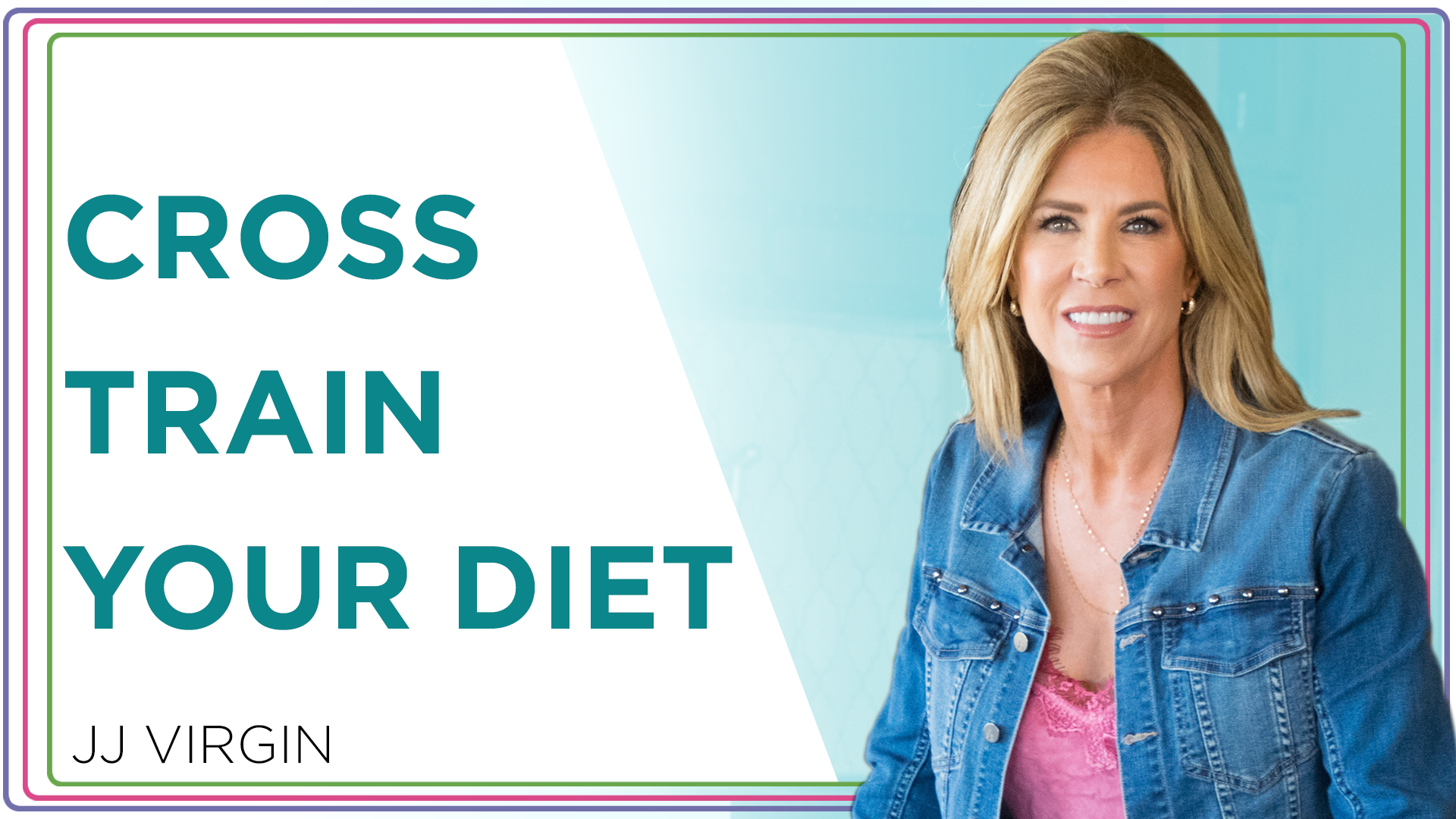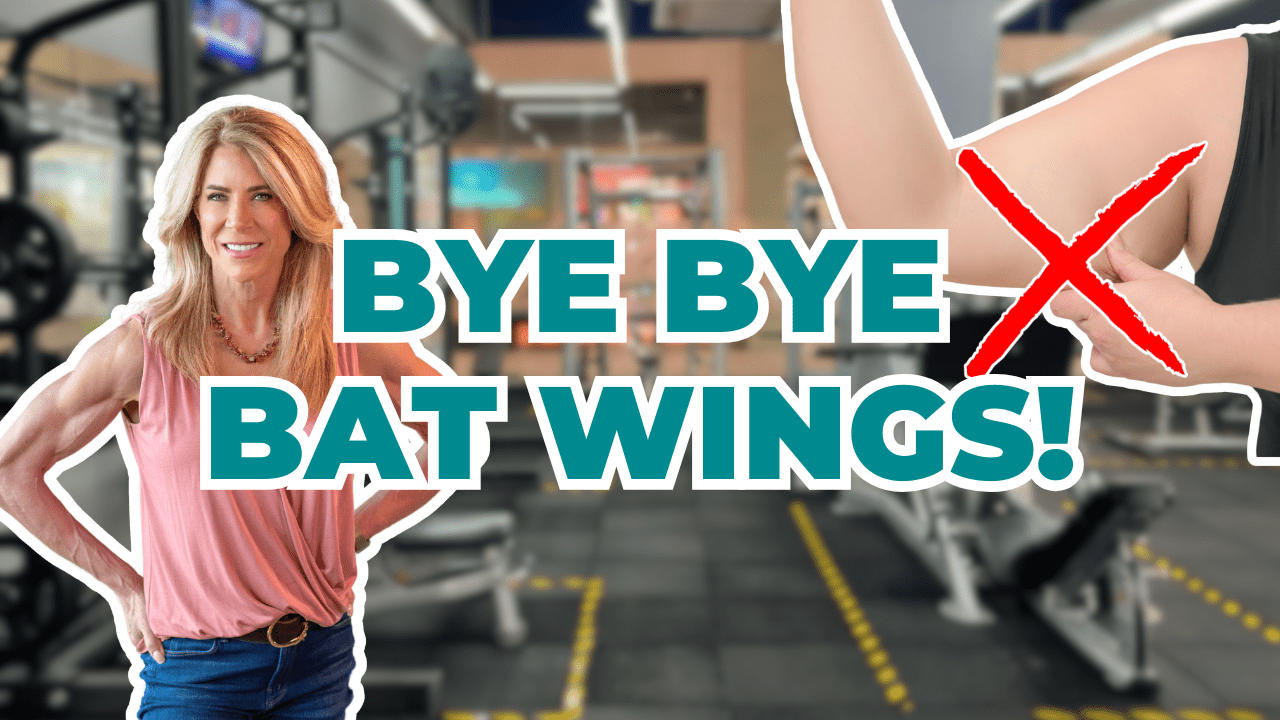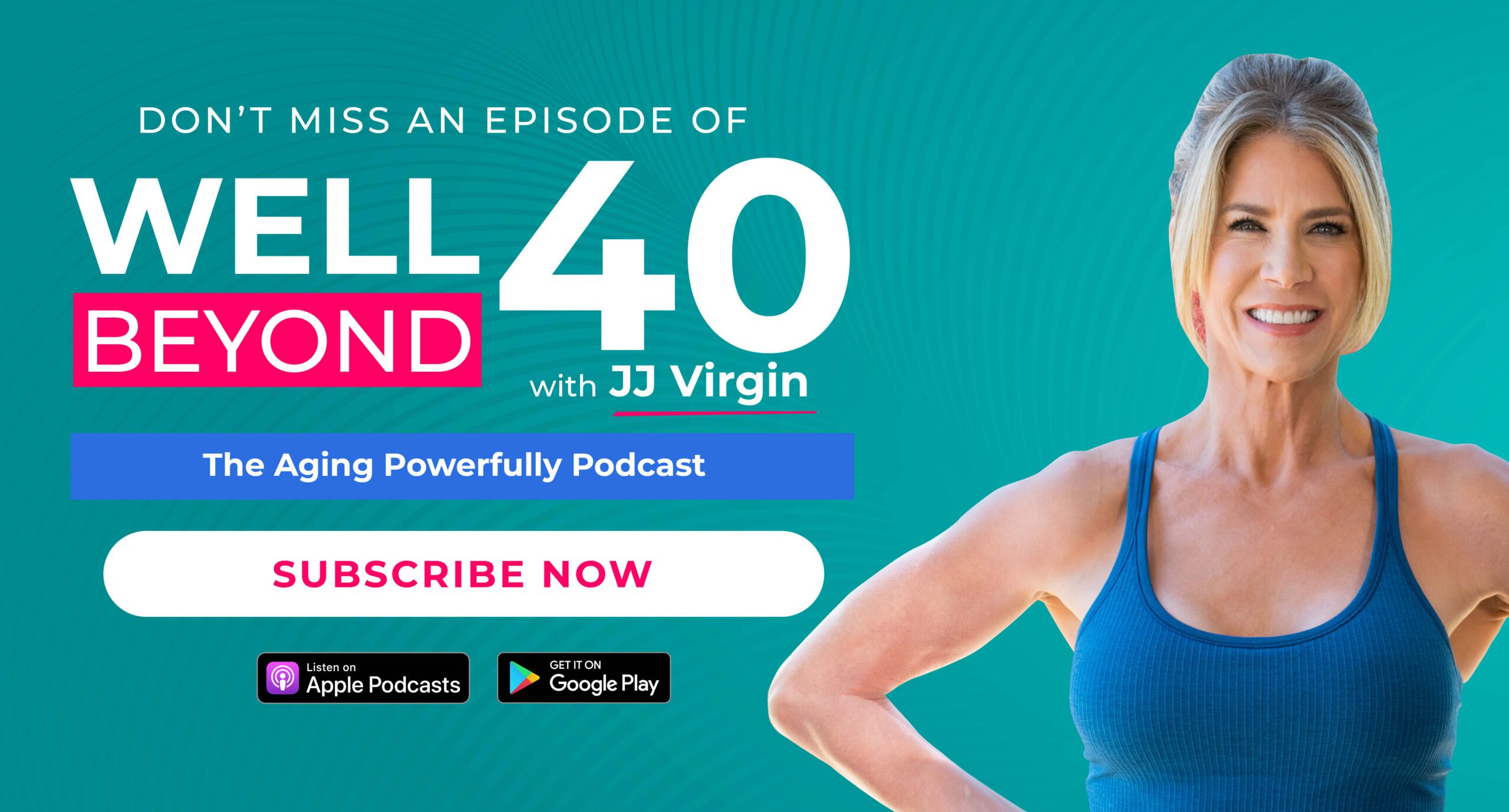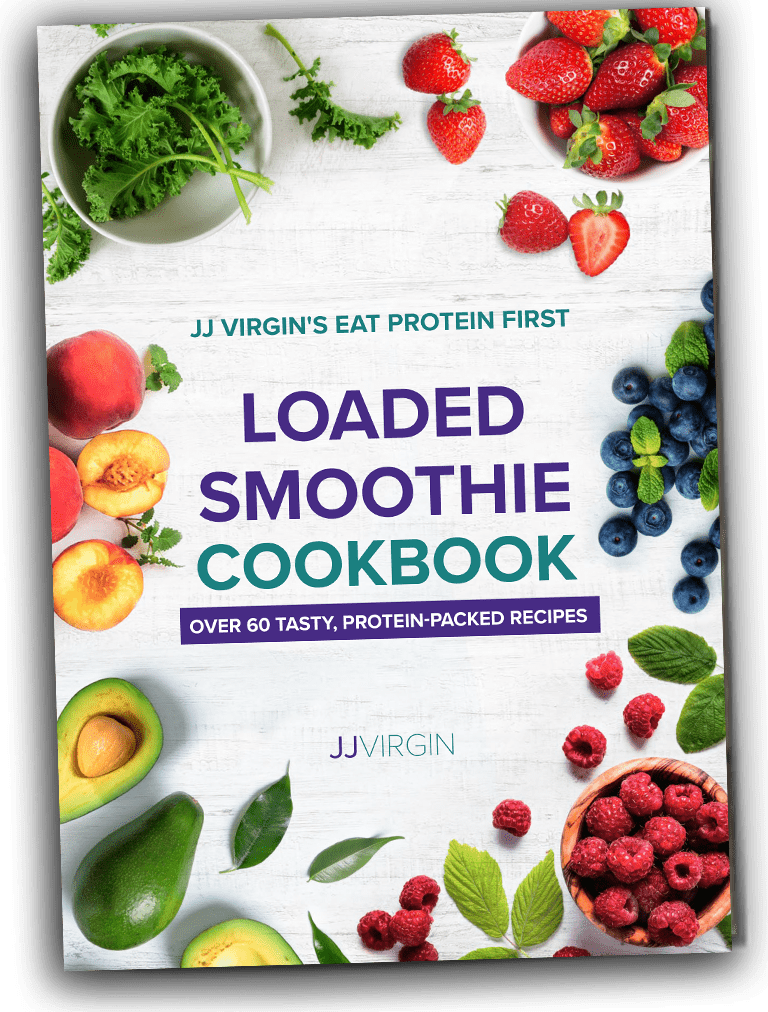Mix Up Your Diet to Boost Your Metabolism + Jumpstart Weight Loss
You wouldn’t do the same exercise for the rest of your life and expect consistently great results, right? Losing weight demands that same approach. In this episode, I’ll show you how to jumpstart weight loss by cross-training your diet. You’ll learn the 2 big culprits that are likely holding your weight hostage, a simple strategy to upgrade your favorite foods, how to do intermittent fasting to lose weight and break plateaus, and how caloric and carb variability can help you reach your goal weight. With this information, you’ll understand why cross-training is critical for mixing up your diet, boosting your metabolism, and breaking weight loss resistance. Dieting isn’t a hobby… It’s a way to your BEST life!
Mentioned in this episode:
TVAD_YT_4
JJ Virgin: [00:00:00] Have you ever tried to lose weight then you just hit that wall? So frustrating. I mean, it’s amazing to see pounds start coming off, but then suddenly you hit a plateau and the weight is like a Boulder or it boomerangs right back. I’m going to show you how to jumpstart fat loss and keep it off by cross training your diet, you know, just like you cross train your exercise to get fit.
Hey, there I’m JJ Virgin and here’s my cred. I’m a four times New York times bestseller and a fitness hall of Famer and I help people lose. And stop the weight regain by identifying their hidden food intolerances and lowering their sugar impact. I’m glad you’re here because I think I have some things that can help you too.
So if you want to make sure you don’t miss this kind of good information, let’s stay connected. All you have to [00:01:00] do is hit like on this video and subscribe to this channel. So what the heck is, cross-training your diet and what will it do for you? Well, Let’s start with how most people think of.
Cross-training a little of this, a little of this and a little of this, and suddenly you’re in great shape. Now you wouldn’t only do one exercise for the rest of your life. Would, you know, you work your way around the gym and then you mix it up. Otherwise your body adapts and stops improving. Changing it up.
Does all of these amazing things for your health, it improves your fitness, it prevents injury. It improves your posture, your balance, it boosts your brain function. You recover faster and you don’t get bored. You get the idea. So cross train your diet. Well, it does the same thing. Yeah, you’re probably worried.
You’ll be lifting watermelons like kettlebells [00:02:00] aren’t you, you actually cross train your diet the same way you do with exercise by changing it up and not eating the same amount of calories or the same macros all the time. Mixing up the protein, the carbs and the fat. I mean, after all your body, isn’t a bank account, it’s a chemistry lab and you have to change it up to make sure your body doesn’t adapt and go into survival mode where it holds onto fat.
Like it does when you starve yourself, we all know that doesn’t work. Your body tries to keep that fat right there, that it could be using for food. So it shut down fat burning. So to fuel your metabolism and breakthrough. You need to cross train and keep your body guessing you want to keep it burning and not have it just count on one steady source of fuel.
You don’t want to ramp down like, oh, I got this. I don’t need to work so hard, but first you have to prepare, [00:03:00] get to a certain level of diet fitness, right? Like you wouldn’t go out and be a triathlete first date, you decide, start exercising, right? Like, oh, I think my first day, I’ll run a few miles and I’ll bike to the next town and I’ll swim across the lake.
No. So first you got to set yourself up for success. Here’s how you do it. Step one, you’re going to identify your hidden food intolerances. Now food intolerance is one of the major reasons you get inflamed and you can’t drop weight. Here’s the good news. You just need to take three. And do the Virgin Anti-Diet to figure out which foods are hurting you and which foods aren’t, you can’t get your goal weight, or look or feel great until you swap those high-fi high food intolerance foods out for ones that can heal you and fuel you.
And here’s, what’s awesome. Quite often, like always I hear that those swaps tastes even better than what you were. Now, while you’re doing that, you’re also going to eat by [00:04:00] the Virgin anti-diet plate. That means that each meal, no snacks, you’re going to be eating clean protein. Those are things like wild fish, grass fed beef, pastured, pork, and chicken and healthy fats, like avocado and coconut and nuts and seeds and lots of fiber,
from non-starchy vegetables and slow, low carbs. The reasons we put that together like that is because it’s super satisfying. You will be feeling fuller longer, but not bloated. Right? And it helps keep your blood sugar balanced. And speaking of blood sugar bounce, step two is lowering your sugar impact.
Now sugar sneaks into our diets. Way more than we usually know in some of the most bizzaro places. So first we’re going to make sure you’re getting out all the obvious. Right. Like don’t add sugar in, then we’re going to look at all the places it could be sneaking in. So you want to check in with my sneaky sugar inventory in the links below to see where else you might [00:05:00] need to Sherlock that sugar out.
Now, once you lower your sugar. And you improve your insulin sensitivity on your blood sugar balance. You’re basically teaching your body to shift from only being able to be a sugar burner. That means you’re like hungry every couple hours. You would never forget to eat to what I call a multi fuel burner.
That means that you can burn fat. You can be burned carbs, and you can burn ketones for fuel. You are metabolically flexible once you’re there. Guess what? You are now ready to cross train your diet and here’s how you do it. Number one, you start fasting a couple of times a week. Now this might sound like I’m hungry,
remember hungry equals younger, but it’s not as hard as it seems first off. If you’ve been following me, you know, that I advocate at least a 12 hour fast every night. That means shut the kitchen down. Get out of there at least three to four hours after before bedtime, right after dinner, lock it down and then wait an hour or two.
When you wake up in the morning, do a little [00:06:00] faster workout. So if you’re going to bed at 10, you stopped eating by seven at the latest, and you woke up at six and you had breakfast around. Look at how easy that was. That’s right there. 13 hours. So the first thing we’re going to do is do that, but what I want you to do a couple of days a week is push that window so that you’ve got a 16 hour fast where maybe you’re not having breakfast, you’re having it more like brunch at about 10.
And you have dinner a little bit earlier, so you stop eating at six next number two now. Once you’ve done that. Now you can get advanced and once a week you can do something called OMAD. Sounds cool too, right? The reason you want to do OMAD it’s one meal a day, and you’re going to try to do this. I think the easiest time to do is on the weekend.
Sleep in and then have an early dinner. Easy peasy. Why do we want to do that while you’re doing a lot of caloric variability, you’re making your stem cell production increase. That’s anti-aging. It’s great for improving insulin sensitivity, which means you’re going to have [00:07:00] better blood sugar balance and burn fat and promote something called autophagy,
this is basically cellular detox. It’s your body taking out the cellular trash. All right. Next one. Number three is varying your carbs. Now, where are we getting our carbs? I talked about the plate and the protein, fat and fiber from non starchy vegetables and slow, low carbs. I want you to still eat as many non starchy veggies as you possibly can.
That’s broccoli and Brussels sprouts and cauliflower and, and deep green leafy, things like that. But your slow, low carbs things like wild rice. Or squashes or sweet potato. This is a thing that you can vary based on a couple of things. The biggest thing would be based on is your activity level. If you’ve got a big intense day and you’re doing some hit training and weight training, you might do a couple more carbs that day, but maybe you’ve got a low level day.
Maybe you’re at a meditation retreat, take those carbs way down. [00:08:00] So a little bit of that macro cycling can make a big difference too. And finally, and commit to this. At least once a year, preferably couple of times I want you to do an advanced detox. So that is where you really focus for anywhere from three to 21 days on some advanced detox strategies.
And one time a year, two, you want to make sure that you reassess annually, both your food intolerance and your sugar impact. Make sure those sugars don’t go sneaking back into your life. And most importantly, Dieting shouldn’t be your hobby. It shouldn’t be a way of life. It is a way to your best life. You want to use diets, therapeutically to create the eating plan that’s best for you.
And that’s one that’s going to help you shift from being a sugar. To a multifuel burner. We’re burning off that body. Fat is easy and automatic. I hope you’ve enjoyed this info on cross training your diet. Now, if you want to go deeper, check out some of the other [00:09:00] resources in the link below, and don’t forget to like subscribe.
So you get more healthy diet, Intel tips and tricks. In the next video, we’re going to start a series that helps you uncover what the issue could be. If you’re not losing weight, hint, it may not be your diet. See you there.
Thanks again for being with me this week for more info on this and other health topics I cover or to rate and review, find me on Instagram, Facebook and my website, JJvirgin.com. And don’t forget to subscribe to my show. So you won’t miss a single episode. Go to subscribetojj.com.

 Subscribe to our show
Subscribe to our show 




